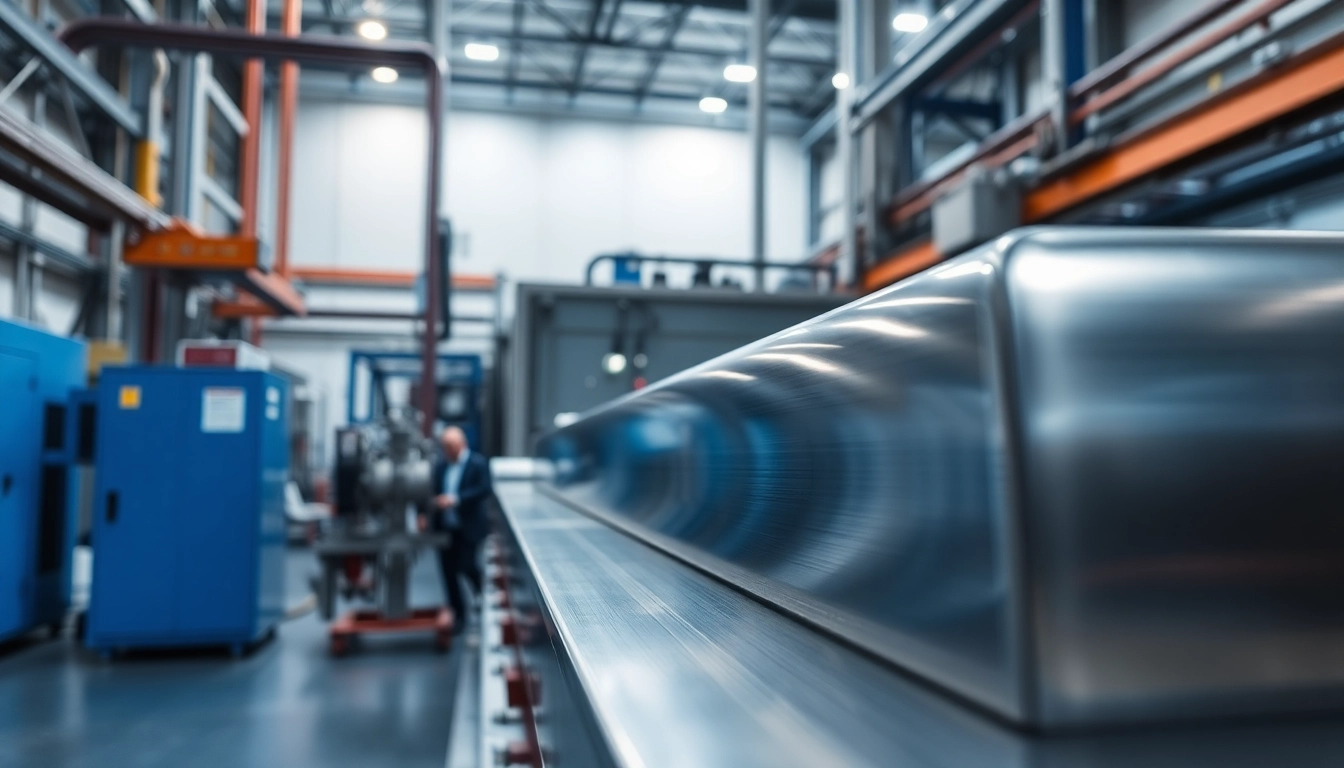Understanding EP Coating Basics
What is EP Coating?
Electrophoretic coating, or EP coating, is a sophisticated surface finishing process used primarily to enhance the corrosion resistance and aesthetic appeal of metal components. It employs an electric charge to deposit paint onto a conductive substrate, creating a uniform and durable coating layer. This process is widely adopted in various industries due to its effectiveness in delivering high-quality finishes to a range of applications, from automotive parts to household appliances. The primary goal of ep coating is to ensure thorough coverage, even in hard-to-reach areas, thus extending the lifespan of coated items and improving their overall performance.
How EP Coating Works
The electrophoretic coating process involves several key steps. Initially, the metal parts undergo a meticulous cleaning and pre-treatment process to remove any contaminants or rust, which could impede adhesion. After cleaning, the components are submerged in a tank containing a specially formulated paint solution that has electrically charged particles suspended in it.
When an electric current is applied, these charged particles migrate towards the oppositely charged substrate, depositing a uniform layer of paint. This deposition occurs until the surface is entirely covered, ensuring that even intricate designs receive adequate attention. Following the application of the coating, the parts are cured, typically by heating, which promotes cross-linking of the paint particles, resulting in a durable and chemically resistant finish.
Benefits of Electrophoretic Coating
EP coating offers several advantages, making it a preferred choice in many manufacturing processes:
- Corrosion Resistance: One of the most significant benefits of EP coating is its ability to protect against corrosion. The uniform coverage provided by the process ensures that even small crevices are adequately coated.
- Uniform Thickness: The nature of the electrophoretic process allows for an even thickness across all surfaces, critical in areas with complex geometries.
- Reduced Waste: The method is highly efficient, with minimal waste of coating materials. The controlled nature of the deposition process leads to a lower environmental impact compared to other coating methods.
- Versatility: EP coating can be applied to a variety of materials, including metals and some plastics, providing a flexible solution for different applications.
- Aesthetic Appeal: Beyond protection, EP coatings can be produced in a variety of colors and finishes, enhancing the appearance of products.
Applications of EP Coating Across Industries
Automotive Industry Use Cases
The automotive industry is one of the largest users of electrophoretic coating technology. EP coatings are applied to various car components, such as chassis, exhaust systems, and interior parts, due to their outstanding corrosion resistance and finish quality. The process not only extends the life of the vehicle but also plays a crucial role in meeting stringent regulatory requirements for emissions and environmental safety.
Aerospace and Defense Applications
In aerospace and defense, the reliability and durability of parts are paramount. EP coatings are employed to protect components from harsh environmental conditions and corrosive substances typically encountered in these sectors. Their lightweight nature facilitates enhanced performance while maintaining stringent safety standards, making them ideal for aircraft and military equipment.
Consumer Goods and Electronics
Consumer goods, such as kitchen appliances and electronics, also benefit from EP coatings. Here, the coatings are used to provide not only protection but also appealing aesthetics. The ability to choose from various colors and finishes allows manufacturers to meet consumer preferences while ensuring that their products are resistant to wear, tarnishing, and corrosion.
EP Coating Process Explained
Preparation and Pre-treatment Steps
The preparation stage of the EP coating process is crucial for ensuring that the final coating adheres correctly to the substrate. This stage includes several detailed steps:
- Cleaning: Components must be thoroughly cleaned to remove grease, dirt, and oxidization. Techniques such as ultrasonic cleaning or chemical agents are often utilized.
- Phosphating: This pre-treatment step involves converting the surface to a more reactive form, enhancing adhesion and corrosion resistance.
- Rinsing: Once cleaned and treated, components must be rinsed with deionized water to remove any remaining residue.
Electrophoretic Deposition Process
Once the components have been prepped, the actual electrophoretic deposition can proceed. The key stages include:
- Submersion in Coating Bath: The items are immersed in a tank filled with a water-based paint suspension.
- Application of Current: An electric current is applied, inducing movement of paint particles toward the substrate, aided by the difference in charge.
- Deposition: The paint particles deposit uniformly on the substrate surface until an even layer is achieved.
Curing and Finishing Techniques
After the deposition, components undergo a curing process, typically achieved through heat exposure to penetrate deeper layers and enhance the bond. This stage is crucial as it solidifies the coating, making it durable and resistant to chemicals, abrasion, and weathering. Additional finishing techniques can be employed depending on the required outcomes, such as polishing for aesthetic qualities or additional protective layers.
Comparing EP Coating to Other Coating Methods
EP Coating vs. Powder Coating
When comparing EP coating to powder coating, several differences come to light:
- Application Method: Powder coating relies on a dry powder that is electrostatically charged and applied to grounded surfaces, whereas EP coating uses a liquid paint suspension.
- Curing Process: Both methods require curing, but powder-coating needs higher temperatures to melt the powder into a solid layer.
- Thickness Control: EP coatings provide better control over thickness, especially in intricate designs, while powder coatings can vary widely.
EP Coating vs. Anodizing
Another commonly compared technique is anodizing, often utilized for aluminum parts. Key contrasts include:
- Material Compatibility: Anodizing is primarily limited to aluminum, while EP coating can be applied to a wider range of metal surfaces.
- Thickness and Durability: Anodizing increases the natural oxide layer, providing corrosion resistance, but the resulting coating may be thinner than that achieved through EP coating.
- Aesthetic Differences: While anodizing provides some color options, EP coating offers a broader palette and finishes.
Choosing the Right Coating for Your Needs
Selecting the appropriate coating method hinges on various factors, including the substrate material, operational environment, desired aesthetics, and budget constraints. Understanding the specific requirements and limitations of each technique can greatly aid in making an informed decision.
Future Trends in EP Coating Technology
Innovations in Coating Materials
The field of electrophoretic coating is rapidly evolving, with ongoing innovations in coating materials that enhance performance characteristics. Future developments may include bio-based or environmentally friendly formulations, providing superior durability while minimizing environmental impact.
Environmental Considerations and Sustainability
As sustainability becomes a focal point in manufacturing, the demand for low-VOC (volatile organic compound) and non-toxic coatings is growing. Future EP coatings are likely to align closer with these environmental standards, incorporating sustainable practices throughout their production and application processes.
The Growing Role of Automation in Coating Processes
The integration of automation and smart technologies into coating processes is set to revolutionize how EP coatings are applied. Enhanced monitoring systems and robotic applications increase consistency and reduce labor costs, leading to improved efficiency and product quality.








